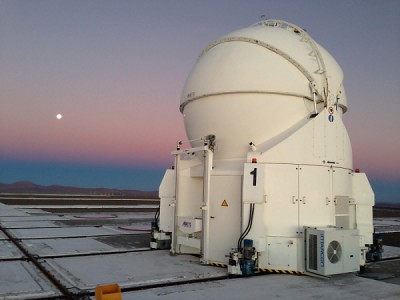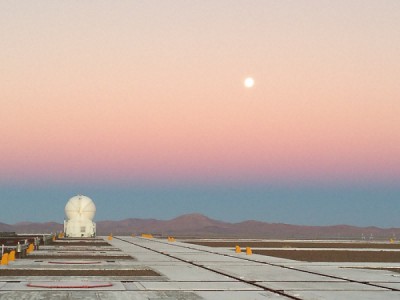If you think refrigeration is dull and unexciting, think again! Today we have a story about a most unusual refrigeration plant installation. One that most people will never have heard of before. It is not only ‘cool’ (forgive the pun) but quite ‘out of this world’ – read on, check out the photographs and you will see why.
As exclusive UK representatives of Intarcon’s refrigeration systems we know the quality of the equipment they manufacture (premium European manufacturing standards). So it came as no surprise when we learned that they had recently built, supplied and commissioned a very special, bespoke refrigeration system for telescope cooling. In fact it was for the auxiliary telescopes (ATs) at the European Southern Observatory (ESO) site in Paranal, Chile.
Given the arid and hot desert location of the observatory, the ESO was looking for a premium quality solution with high reliability under extreme operating conditions – criteria that they knew would not be easy to fulfil.
Telescope Cooling Commission
Here in more detail are the key points of the project’s requirements:
1. The ESO has 4 auxiliary telescopes (ATs) and 4 very large telescopes (VLTs). All the telescopes require a cooling system in order to cool down various electronic parts. The auxiliary telescopes had glycol chillers installed but the ESO realised they did not have enough cooling capacity to operate properly and reliably. So they went in search of a solution to the problem.
2. Intarcon received their enquiry and were readily able to confirm that they could indeed fulfil the requirements which were:
a) To design and manufacture a chiller in a packaged construction
b) The chiller would have to provide not only the required level of cooling but be able to reliably operate under extreme climatic conditions.
c) The climatic conditions were:
Operating location height: 3,000 metres
Very aggressive sun impact of 1200 W/m2
Strong winds
Extreme temperature range (both high and low)
3. Installation would also have to be assured and training of ESO personnel included
Intarcon’s response was that they could deliver the whole package – design, manufacture, supply, installation and training on site. They won the order 🙂
The design and manufacturing process took place in 2013 with Intarcon building 5 bespoke chillers * (1 for the first auxiliary telescope, 3 for the remaining auxiliary telescopes and 1 as a spare for replacement should it be required at a future date). Installation and training of ESO staff was conducted by Intarcon staff on site in the desert in the Spring of 2014. The commissioning and training as a whole took just 5 working days – 1 for the commissioning itself, 2 for on-site tests, and 2 more days for verifying the correct operation of the chiller and training of staff.
* The model/specification of the Intarcon plant installed is BWF-XF-2136. The chiller is actually a negative temperature Sigilus unit with R404A, a customised hydraulic circuit, duplicated safety devices and even personalised electronic regulation to synchronise the units with their main supervision system. This might not mean much to the average ‘man in the street’ but if you happen to be in the observatory/telescope sector then telescope cooling is an important subject so it might be worth making a note of!
Click here to read more about the amazing observatory and its main telescope.
Our thanks to Aurelio for the technical information and wonderful photos taken on site.

